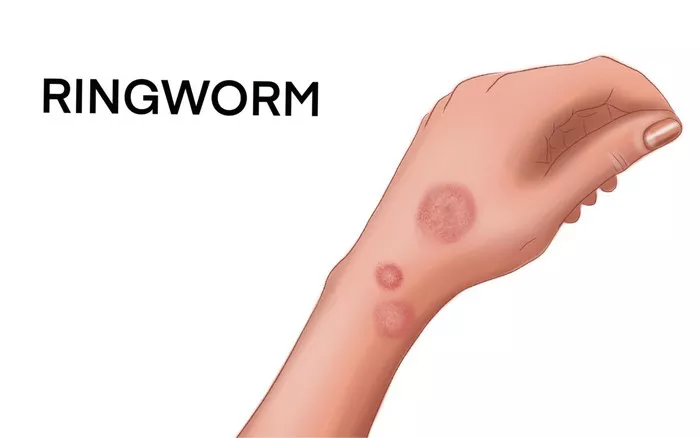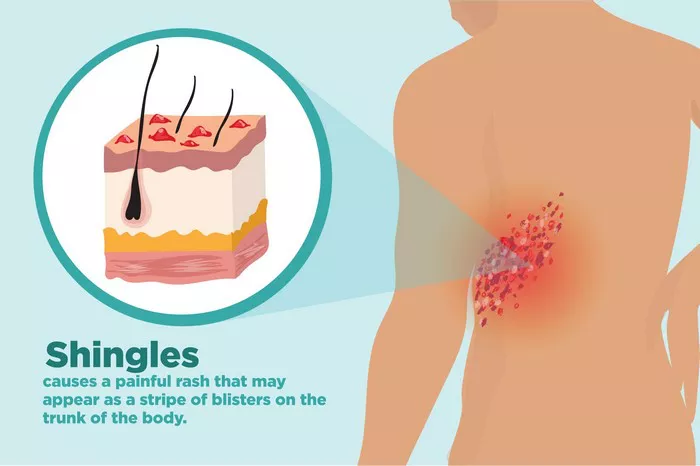Ringworm, despite its name, is not caused by a worm. It is a fungal infection that affects the skin, hair, or nails. Ringworm is contagious, and the infection often spreads through direct contact with an infected person or animal, or by touching contaminated objects. Although it can be alarming, ringworm is treatable, and with proper care, it can heal. In this article, we will explore the signs that indicate ringworm is healing, helping you to recognize the progress and ensure you are on the right path to recovery.
Understanding Ringworm and Its Symptoms
Before we discuss how to identify healing signs, it’s essential to understand what ringworm is and how it appears. Ringworm, medically known as tinea, appears as a red, itchy, circular rash with raised edges and a clear center, which resembles a ring. It can occur anywhere on the body, but it is most commonly found on the feet (athlete’s foot), scalp, groin (jock itch), or nails.
The common symptoms of ringworm include:
- Red, scaly patches that are often circular in shape.
- Itching and discomfort in the affected area.
- In severe cases, the skin may crack or blister.
How to Treat Ringworm
To effectively treat ringworm, antifungal medications are typically used. These medications can be found in various forms, including creams, ointments, powders, and oral tablets. Over-the-counter antifungal creams, like clotrimazole or terbinafine, are commonly used for mild cases. For more severe or widespread infections, a healthcare provider may prescribe oral antifungal medication.
It’s important to follow the prescribed treatment plan. If you stop using the medication too soon, the infection could return or worsen. However, with consistent treatment, ringworm usually heals within two to four weeks.
Early Signs of Healing
When you begin treatment for ringworm, there are a few early signs that indicate the infection is healing. These signs are usually visible after a few days of using antifungal creams or taking oral medication. Here are the early signs that your ringworm may be improving:
Reduction in Itching and Discomfort: Itching is one of the most bothersome symptoms of ringworm. If the itching starts to decrease, it’s a good sign that the infection is being treated effectively. The antifungal medication works to stop the growth of the fungus, which relieves the irritation and reduces the urge to scratch. The reduction in itching often happens within the first few days of treatment.
Less Redness and Inflammation: In the early stages of ringworm, the affected area can become red, swollen, and inflamed. As the infection heals, the redness and inflammation begin to subside. The rash may start to fade, and the edges of the ring may appear less pronounced. This is one of the first visual signs that the infection is responding to the treatment.
Smoother Skin: The skin affected by ringworm often becomes rough, scaly, or cracked. As healing progresses, the skin will start to look smoother. The scales will gradually shed, and the skin’s texture will return to normal. You may notice that the skin in the affected area begins to feel softer and less irritated.
Intermediate Signs of Healing
As the healing process continues, you may notice more significant changes in the appearance and feel of the affected skin. These intermediate signs typically appear after a week or two of consistent treatment.
Diminishing Ring Shape: One of the most noticeable features of ringworm is the distinct ring-like shape. As the infection heals, the circle will become less defined, and the skin inside the ring may start to clear up. The edges of the ring may blend more into the surrounding skin, and the infection may appear smaller over time. This is a clear sign that the antifungal medication is working and the fungal infection is being eliminated.
No New Lesions: When you have ringworm, new lesions may appear as the infection spreads. However, during the healing process, no new patches should form. If you notice that the rash has stopped spreading and no additional lesions are showing up, it is an encouraging sign that the infection is being controlled.
Reduction in Crusting or Blistering: In severe cases of ringworm, the skin may develop blisters or crust over. As healing progresses, you will notice that these blisters begin to disappear, and the skin will no longer form new crusts. The area may look smoother, with a reduction in scabs or dry patches.
Decreased Swelling: Swelling around the affected area should reduce as the infection heals. The skin may appear less puffy or inflamed, and any raised areas caused by the infection will flatten out. This reduction in swelling is a positive sign that the fungus is being eradicated.
Later Signs of Healing
After two to four weeks of treatment, the infection should be mostly healed, though it can take a little longer for some people, especially if the infection was extensive or resistant. Here are the later signs that indicate ringworm is nearly gone:
Complete Disappearance of the Rash: By this stage, the rash should be almost gone. The redness, scaling, and ring-like shape should have faded significantly, and the affected area should look similar to the surrounding skin. If there are any remaining spots, they will likely be faint and without the distinct border of the initial infection.
Regrowth of Hair (if Scalp Is Affected): If the infection affected the scalp, hair loss might have occurred in the area of the rash. As the ringworm heals, you may notice that the hair starts to regrow. This can take several weeks to months, depending on the severity of the infection. The regrowth should be gradual, and hair should return to its natural texture and color.
No More Discomfort: Once the infection is fully healed, you should no longer feel any discomfort in the affected area. The skin will feel smooth, and any pain, tenderness, or itching should be completely gone. If you still experience any discomfort, it may indicate that the infection is not fully healed or that another type of skin condition is present.
How to Support the Healing Process
While waiting for ringworm to heal, there are a few steps you can take to support the treatment and speed up recovery:
Continue Using Antifungal Treatment: Even if you notice signs of improvement, it’s essential to finish the full course of antifungal medication as prescribed by your doctor. Stopping treatment early can result in the infection returning.
Keep the Affected Area Clean and Dry: Fungus thrives in moist environments, so it is important to keep the affected area dry and clean. Wash the area with mild soap and water, and then pat it dry with a clean towel.
Avoid Scratching: Scratching the affected area can make the infection worse or cause the fungus to spread. Try not to scratch, even if the area itches, and apply an anti-itch cream if necessary to relieve discomfort.
Wear Loose, Breathable Clothing: Tight or non-breathable clothing can trap moisture and irritate the skin. Choose loose-fitting clothes made from natural fabrics like cotton that allow your skin to breathe.
When to See a Doctor
Most cases of ringworm respond well to over-the-counter antifungal treatments, but sometimes the infection can be stubborn or severe. If you experience any of the following, it’s a good idea to consult a doctor:
- The infection does not improve after two weeks of treatment.
- The rash is spreading or getting worse.
- You develop a fever, pus, or other signs of a secondary infection.
- The ringworm affects your nails, scalp, or other sensitive areas.
Conclusion
Ringworm is a common and treatable fungal infection. Recognizing the signs that it is healing can help you stay on track with your treatment and ensure the infection is fully eradicated. Early signs of healing include a reduction in itching, less redness, and smoother skin, while intermediate and later signs include the disappearance of the rash and regrowth of hair if the scalp is involved. Remember to continue your treatment for the recommended duration and follow proper hygiene to prevent reinfection. If you are unsure about your healing progress or if symptoms persist, consult with a healthcare professional for guidance.
Related topics:


























